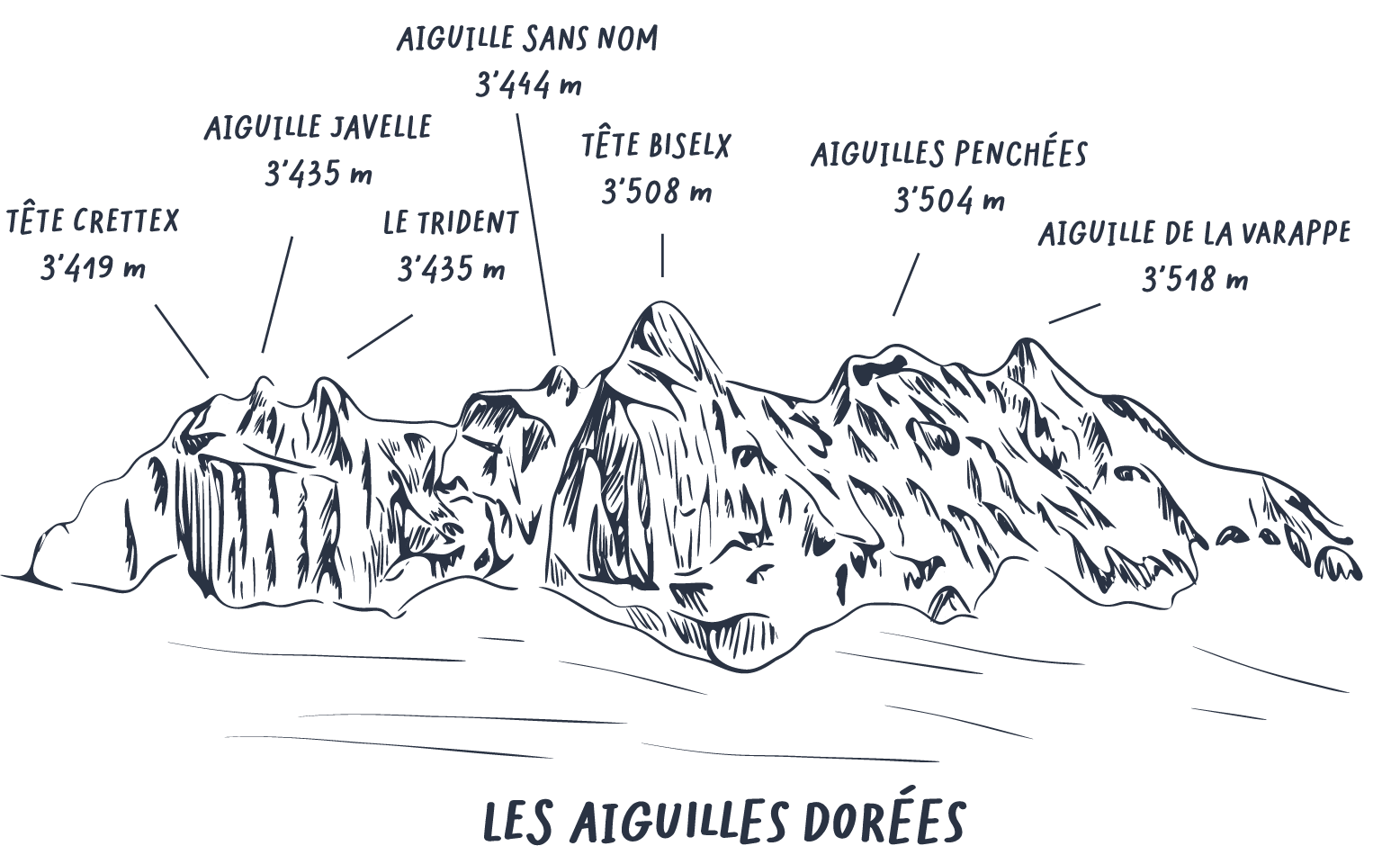A PRACTICE THAT IS BECOMING PROFESSIONAL
The first traces of mountain guides date back to the 12th century, when the “marronniers“, sent by hospices, helped travelers cross alpine passes.
Over time, muleteer guides led the walkers to their destinations with their mules. At the end of the 18th century, scientists, such as Horace Bénédict de Saussure, developed a growing interest in the Alpine summits, which they attempted to climb for their research. As a result of this enthusiasm, climbing guides replaced the muleteers and abandoned mules in favor of carriers.
From the 19th century onward, alpinism took on a sporting dimension with British alpinists performing sporting triumphs in the Alps, such as Edward Whymper, who reached the summit of the Matterhorn in 1865. Local figures also began to emerge, such as François Biselx and Maurice Crettex, two alpinists from Champex.
The profession gradually shifted from a seasonal activity to a year-round occupation.
THE “SOCIÉTÉ DES GUIDES ET DES PORTEURS D’ORSIÈRES” (1853-2024)
This society was founded in 1853 and originally brought together local guides and carriers from the region, many of whom came from guiding families where skills were passed down from father to son. It kept alpinism traditions alive by organizing mountain excursions for its members.
In 2003, a partnership with the Verbier Guides was established to ensure the continuation of Orsières’ guiding heritage. Faced with a lack of new recruits, the society ended in 2024, but its legacy endures within the Bureau des Guides de Verbier.
| What is the origin of some of the names given to the summits of the Aiguilles Dorées?
Some of the summits of the Aiguilles Dorées, located on the Trient plateau, bear the names of their first climbers: Tête Crettex, Tête Biselx and Aiguille Javelle. Take a look at the illustration to locate these peaks. |

| The alpinist Emile Javelle gave his name to a surprising shelter, which one? Answer on the next board -> |